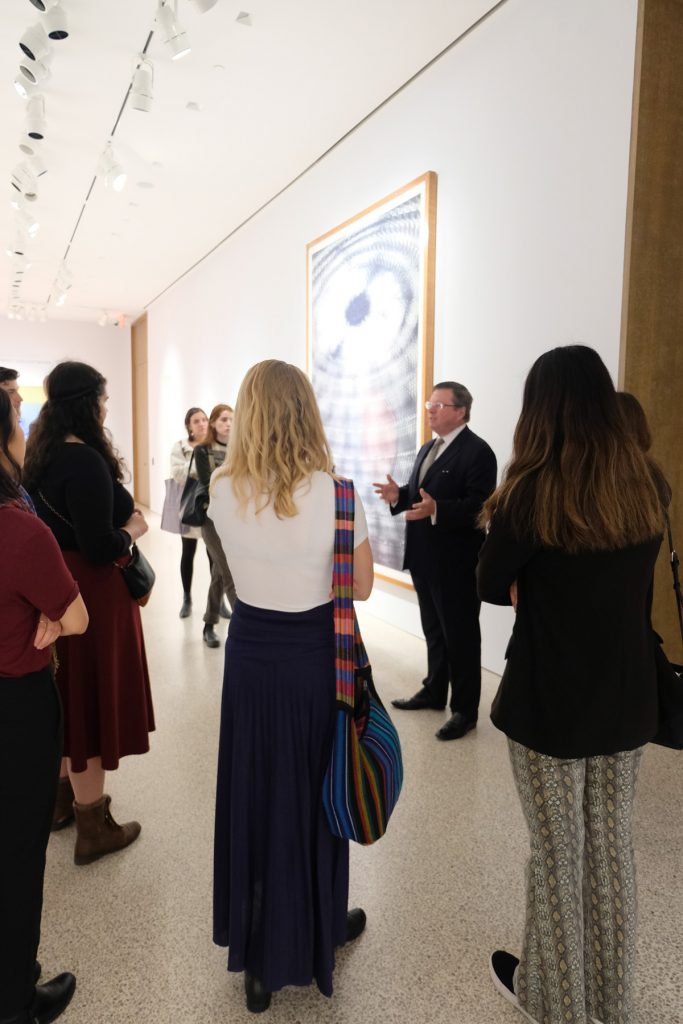Eric Widing, Deputy Chairman, Christie’s
By Sunny Chen ’20
Eric Widing is the Deputy Chairman and previous head of the American Paintings department at Christie’s. He has worked at Christie’s for over twenty years. Prior to joining Christie’s, Widing was a dealer in American Art for seventeen years. He was the director of the Richard York Gallery for eleven years and later established his own gallery, Widing & Peck Fine Art. Eric Widing has since become a recognized authority on American painting and sculpture.

I had taken an Art Business course last semester in Florence, so my knowledge of auction houses prior to this trip was very centered on the business aspect. I was already interested in working in an auction house, but after hearing about Eric Widing’s personal experience with specific artworks I am even more interested. Eric Widing’s discussion of connoisseurship was very valuable. He, and many other people we met on this trip, stressed the importance of looking at objects, and over time connoisseurship can be built by the experience of looking. Eric Widing has worked at Christie’s for many years, so to see the knowledge he built up in that time and hear about his specific experiences in identifying paintings was impressive and beneficial. In addition, it seemed that he builds a special relationship with and appreciation of the paintings he handles, even though he is the middleman of the sales.
It was extremely beneficial to be in the exhibition space and see the artworks directly next to their prices. It is one thing to read about how much a painting sells for, but to look at it in person and see the scale, details, and texture is a completely different experience. It was also interesting to see the Furniture and Decorative Arts space, which seemed very carefully staged and curated.
We also met Rebecca Jones, the Junior Specialist of the Photographs department at Christie’s. Her perspective on photography changing in the digital era was thought-provoking. It will be more difficult to identify original and posthumous prints, but Jones made an interesting point that it is now part of the artist’s responsibility to denote which prints are made by them while they are alive. As someone who is interested in both making photographs and working with artists’ photographs, I enjoyed hearing about Jones’s work. When I first thought about working in an auction house as a career, I had really only thought about selling paintings since it is what I learned in my previous class. Jones’s mentioned that the Photographs Department does not have as many works or exceptional prices as some paintings departments, but my perspective has now broadened in terms of what kind of artwork I would be interested in working with.
Overall, talking with Eric Widing and Rebecca Jones made me realize how important it is to take in the artwork you come in contact with. After seeing many works by a particular artist, Widing is able to estimate the values of paintings and determine if an attribution is incorrect. I also realized that business acumen is necessary in auction houses, but it is also very valuable and just as necessary to have a genuine interest and appreciation for the artwork you are dealing with.